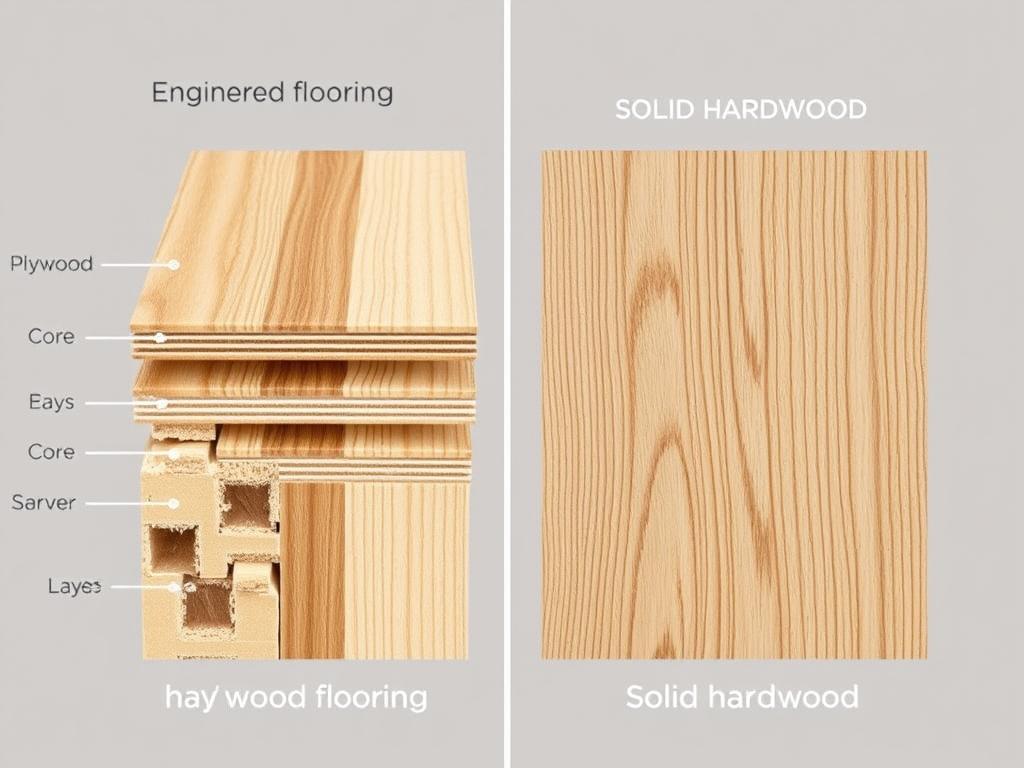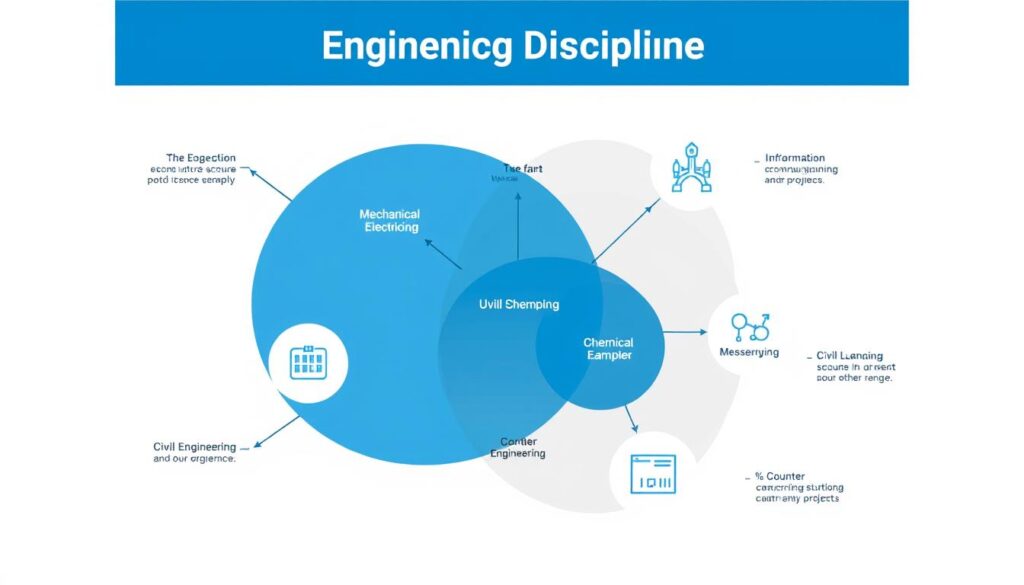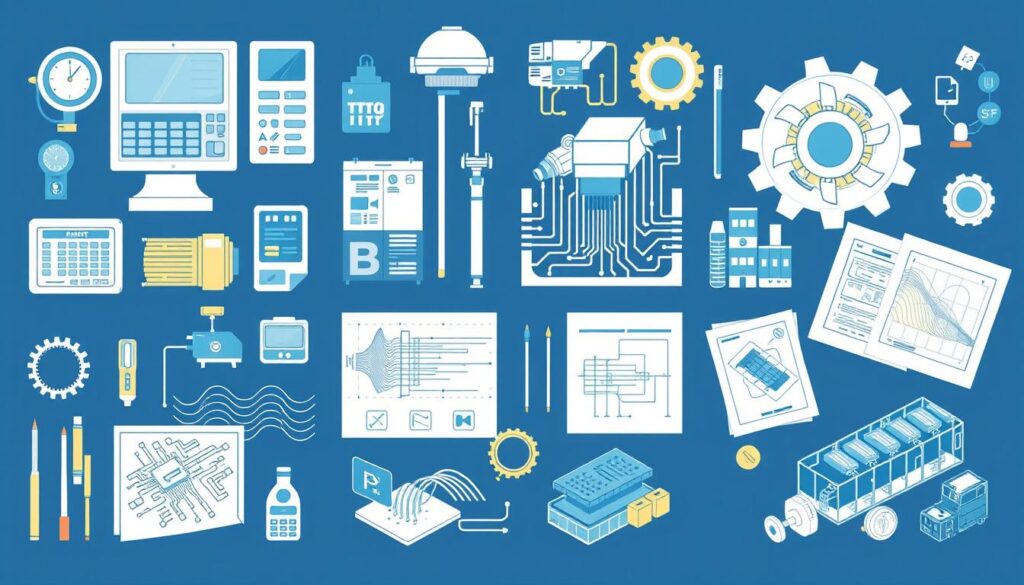Engineering represents one of humanity’s most diverse and impactful fields, encompassing everything from the design of microscopic electronic components to the construction of massive coastal defense systems. The breadth of engineering disciplines reflects our need to solve complex problems across virtually every aspect of modern life. Whether it’s instrumentation engineers developing precision measurement systems, mechatronic specialists creating robotic solutions, or materials engineers developing innovative flooring products, the engineering world connects theoretical science with practical applications that shape our daily experiences.
In this comprehensive guide, we’ll explore both specialized engineering disciplines and engineered consumer products, demonstrating how engineering principles apply across technical fields and everyday items alike. From the high-tech world of electrical and electronic engineering to the practical applications found in engineered hardwood flooring, we’ll examine how engineering innovation continues to advance technology and improve quality of life.
Engineering Disciplines Deep Dive
Engineering disciplines have evolved to address specialized challenges across industries, each with unique methodologies, tools, and applications. Let’s explore some of the most innovative and impactful engineering fields shaping our world today.
The diverse world of engineering encompasses specialized disciplines that solve unique technical challenges
Instrumentation Engineering
Instrumentation engineering focuses on the design, development, installation, and maintenance of instruments and systems that monitor and control equipment, machinery, and processes. These engineers are essential in industries where precise measurement, automation, and control are critical.
Key Technologies:
- Sensors and transducers for measuring physical variables
- Programmable Logic Controllers (PLCs)
- Distributed Control Systems (DCS)
- SCADA (Supervisory Control and Data Acquisition) systems
- Industrial IoT (Internet of Things) devices
Real-World Applications:
In oil refineries, instrumentation engineers design monitoring systems that ensure safe and efficient operations by tracking temperature, pressure, and flow rates. In pharmaceutical manufacturing, their work ensures precise control of critical processes that maintain product quality and safety.
Industries relying heavily on instrumentation engineering include oil and gas, chemical processing, power generation, pharmaceuticals, and food and beverage production.
Mechatronic Engineering
Mechatronic engineering represents the integration of mechanical, electronic, and computer engineering to create smart systems with enhanced functionality, precision, and reliability. Think of mechatronic systems as working like a human nervous system—where sensors act as nerves, microprocessors function as the brain, and actuators serve as muscles.

Mechatronic systems integrate mechanical, electronic, and software components to create intelligent machines
| Component | Function | Example Technologies |
| Sensors | Gather data from environment | Proximity sensors, vision systems, force sensors |
| Controllers | Process information and make decisions | Microcontrollers, PLCs, embedded systems |
| Actuators | Execute physical actions | Electric motors, pneumatic systems, hydraulics |
| Mechanical Systems | Provide structure and movement | Gears, linkages, bearings, frames |
Mechatronic engineering has revolutionized manufacturing through industrial automation and robotics. In Gibraltar, mechatronic systems are increasingly used in port operations, where automated guided vehicles (AGVs) and robotic cranes improve efficiency and safety in cargo handling.
Deepen Your Mechatronics Knowledge
Looking to understand how mechatronic systems can improve your industrial processes? Our comprehensive guide explores the latest advancements and practical applications.
Electrical and Electronic Engineering
While often mentioned together, electrical and electronic engineering represent distinct yet complementary disciplines. Electrical engineering primarily deals with the generation, distribution, and use of electrical power, while electronic engineering focuses on devices and systems that use electricity for information processing and control.
Electrical Engineering Focus:
- Power generation and distribution systems
- Electric motors and generators
- High-voltage transmission
- Renewable energy integration
Electronic Engineering Focus:
- Integrated circuits and microprocessors
- Communication systems
- Control systems
- Signal processing
In Gibraltar, electrical and electronic engineering plays a crucial role in maintaining the territory’s power infrastructure, telecommunications networks, and maritime navigation systems. The integration of renewable energy sources, particularly solar power, has created new opportunities for electrical engineers to design efficient grid systems that reduce dependence on imported energy.
Acoustic Engineering
Acoustic engineering applies the science of sound and vibration to design spaces, products, and systems with specific acoustic properties. These engineers work at the intersection of physics, psychology, and design to create environments that enhance desired sounds while minimizing unwanted noise.

Acoustic engineers use specialized equipment and environments to measure and control sound properties
Real-world applications of acoustic engineering include the design of concert halls with optimal sound distribution, development of noise-cancellation technologies for headphones, and creation of sound barriers along highways to reduce traffic noise pollution. In industrial settings, acoustic engineers help reduce machinery noise to protect worker hearing and comply with safety regulations.
The field combines technical expertise with creative problem-solving, as engineers must understand both the physical properties of sound waves and the subjective human experience of hearing.
Design Engineering
Design engineering bridges the gap between conceptual ideas and practical implementation, focusing on creating products and systems that are not only functional but also user-friendly, aesthetically pleasing, and economically viable. Unlike purely aesthetic design, design engineering emphasizes the technical feasibility and performance of the final product.
Key Aspects of Design Engineering:
- User-centered design principles
- Computer-aided design (CAD) and modeling
- Prototyping and testing methodologies
- Design for manufacturability (DFM)
- Sustainable design practices

Design engineers often work in multidisciplinary teams, collaborating with specialists from various fields to create comprehensive solutions. For example, in automotive design, they work alongside mechanical engineers, electrical engineers, and materials specialists to develop vehicles that meet performance, safety, and aesthetic requirements.
Coastal Engineering
Coastal engineering focuses on managing and protecting coastal zones through the design and construction of structures and systems that work with natural processes. This specialized field combines civil engineering principles with oceanography, geology, and environmental science to address the unique challenges of coastal environments.

Coastal engineering solutions protect shorelines while working with natural processes
Gibraltar, with its strategic location and limited coastline, relies heavily on coastal engineering to protect its shores from erosion and storm damage. Engineers have designed specialized breakwaters and seawalls that account for the unique wave patterns and currents of the Mediterranean Sea and Atlantic Ocean junction.
| Coastal Structure | Purpose | Engineering Considerations |
| Breakwaters | Reduce wave energy reaching the shore | Wave height, direction, material durability in saltwater |
| Seawalls | Protect land directly from wave action | Foundation stability, wave impact forces, drainage |
| Beach Nourishment | Replenish eroded beaches | Sediment grain size, transport patterns, ecological impact |
| Artificial Reefs | Create habitat and reduce wave energy | Material composition, structural stability, ecological function |
Sound Engineering
While related to acoustic engineering, sound engineering (or audio engineering) focuses specifically on recording, manipulating, and reproducing sound. Sound engineers work in recording studios, live events, broadcasting, and film production to ensure optimal audio quality and creative sound design.

Sound engineers combine technical expertise with creative skills to produce high-quality audio
Sound engineers must understand both the technical aspects of audio equipment and the artistic elements of music and sound design. They work with specialized tools including mixing consoles, digital audio workstations (DAWs), microphones, and signal processors to capture and shape sound.
In Gibraltar, sound engineering supports the territory’s growing entertainment industry, including music festivals, theater productions, and broadcast media. The unique acoustics created by the Rock of Gibraltar present interesting challenges and opportunities for sound engineers working on outdoor events.
Engineered Products: The Science Behind Everyday Items
Engineering principles don’t just apply to industrial systems and infrastructure—they’re also fundamental to many consumer products we use daily. Engineered products represent the application of scientific knowledge, materials science, and manufacturing techniques to create items with specific performance characteristics. Let’s examine engineered flooring as a prime example of how engineering transforms raw materials into sophisticated products.

Cross-section comparison revealing the layered construction of engineered hardwood versus solid wood flooring
Engineered Hardwood vs. Wood Flooring: An Engineering Perspective
Engineered hardwood flooring represents a perfect example of how engineering principles can enhance natural materials. Unlike solid hardwood, which consists of a single piece of wood throughout, engineered hardwood features a sophisticated layered construction designed to improve stability, durability, and versatility.
| Characteristic | Engineered Hardwood Flooring | Solid Wood Flooring |
| Construction | Multiple layers: hardwood veneer bonded to plywood or HDF core layers | Single piece of solid wood throughout |
| Dimensional Stability | High – cross-layered construction resists expansion/contraction | Lower – expands/contracts with humidity changes |
| Moisture Resistance | Better – suitable for below-grade installations | Poor – not recommended for basements or bathrooms |
| Installation Versatility | Can be floated, glued, or nailed down | Typically nail-down only |
| Refinishing Potential | Limited by veneer thickness (typically 1-3 times) | Multiple times (typically 5-7 times) |
| Environmental Impact | Uses less hardwood per square foot | Requires more hardwood resources |
Manufacturing Process: Engineering in Action
The production of engineered hardwood flooring demonstrates several engineering principles in action:
- Material Selection: Engineers select specific wood species and core materials based on performance requirements.
- Layer Design: The orientation and thickness of each layer is precisely calculated to maximize stability.
- Adhesive Technology: Specialized adhesives create strong bonds between layers while minimizing VOC emissions.
- Precision Manufacturing: Computer-controlled cutting ensures dimensional accuracy and interlocking fit.
- Surface Engineering: Finishes are designed for specific wear characteristics and appearance.

Environmental Engineering Considerations
Modern engineered flooring also reflects environmental engineering principles. Manufacturers have developed processes that maximize resource efficiency by using fast-growing species for core layers while reserving premium hardwoods for the visible surface layer. Advanced adhesive formulations have reduced VOC emissions, improving indoor air quality in homes and commercial spaces.
Some manufacturers have implemented closed-loop water systems and biomass energy generation, using wood waste to power their facilities. These innovations demonstrate how engineering can improve both product performance and environmental sustainability.
Find the Perfect Engineered Flooring Solution
Not sure which engineered flooring option is right for your project? Our interactive comparison tool helps you evaluate options based on your specific requirements.
Special Feature: Engineer Lane Gibraltar
Nestled in the heart of Gibraltar’s old town, Engineer Lane represents both a historical tribute to the territory’s engineering heritage and a modern hub for technical innovation. This narrow street, dating back to the 18th century, was named to honor the military engineers who played a crucial role in developing Gibraltar’s defenses and infrastructure.

Engineer Lane in Gibraltar combines historical significance with contemporary technical innovation
Historical Significance
During Gibraltar’s development as a British territory, military engineers transformed the natural rock into an impregnable fortress through an extensive network of tunnels, batteries, and defensive walls. Engineer Lane commemorates these achievements, which represent remarkable feats of civil and military engineering for their time.
The street itself showcases engineering principles in its design, with carefully considered drainage systems and construction techniques that have allowed the structures to withstand centuries of use in a challenging marine environment.
Modern Engineering Hub
Today, Engineer Lane hosts several engineering consultancies specializing in civil, marine, and environmental engineering. These firms leverage Gibraltar’s unique position at the junction of the Mediterranean Sea and Atlantic Ocean to develop specialized expertise in coastal protection, port infrastructure, and sustainable building practices adapted to Mediterranean climates.
The lane has become a symbol of how engineering traditions evolve to address contemporary challenges while respecting historical contexts.
Engineer Lane is located in Gibraltar’s historic center, near Main Street and the Catholic Cathedral
Discover Gibraltar’s Engineering Heritage
Interested in learning more about Gibraltar’s remarkable engineering achievements? Download our case study on how historical engineering solutions continue to influence modern practices in this unique territory.
The Intersection of Engineering Disciplines
While we’ve explored individual engineering disciplines and products, the most innovative solutions often emerge at the intersection of multiple fields. Modern engineering challenges rarely fit neatly into a single category, requiring collaborative approaches that draw on diverse expertise.

Modern engineering challenges require collaboration across traditional disciplinary boundaries
Cross-Disciplinary Innovation Examples
Smart Infrastructure
Civil engineers collaborate with electrical and software engineers to create intelligent transportation systems that monitor traffic patterns, adjust signal timing, and communicate with autonomous vehicles. These systems integrate physical infrastructure with sensors, data analytics, and control algorithms.
Renewable Energy Systems
Developing effective wind farms requires expertise from mechanical engineers (turbine design), electrical engineers (power systems), environmental engineers (impact assessment), and civil engineers (foundations and structures). This collaboration has dramatically improved efficiency and reduced costs.
Medical Devices
Creating advanced prosthetics involves mechanical engineers (joint mechanisms), electronic engineers (control systems), materials engineers (biocompatible materials), and software engineers (user interfaces). This interdisciplinary approach has revolutionized assistive technology.
The Future of Integrated Engineering
As technology continues to advance, the boundaries between engineering disciplines will become increasingly fluid. Tomorrow’s engineers will need to develop expertise across multiple domains while maintaining the ability to collaborate effectively with specialists. Educational programs are already evolving to emphasize interdisciplinary approaches, with many universities offering degrees that combine traditionally separate fields.
This integration extends to engineered products as well. The next generation of consumer goods will likely incorporate advanced materials, embedded sensors, and connectivity features that require input from diverse engineering specialties. From smart flooring that monitors foot traffic and adjusts heating systems to coastal structures that adapt to changing sea levels, the future belongs to solutions that seamlessly blend multiple engineering disciplines.
Conclusion: Engineering a Better Future
From the precision of instrumentation engineering to the practical innovation of engineered flooring, the diverse world of engineering disciplines and products continues to shape how we live, work, and interact with our environment. Whether developing coastal protection systems for Gibraltar’s shores or designing sustainable hardwood flooring for homes, engineers apply scientific principles to create solutions that balance performance, economics, and environmental responsibility.
The most exciting developments often occur at the intersection of different engineering fields, where specialists collaborate to address complex challenges. As we look to the future, this interdisciplinary approach will become increasingly important in tackling global issues like climate change, urbanization, and resource scarcity.
For students considering engineering careers, professionals seeking to expand their expertise, or consumers wanting to make informed choices about engineered products, understanding the breadth and interconnectedness of engineering disciplines provides valuable perspective. Engineering isn’t just about building things—it’s about building a better future through thoughtful application of science and technology.
Connect With Engineering Experts
Have questions about specific engineering disciplines or need consultation on an engineering project? Our team of specialists covers all the fields discussed in this article and more.
